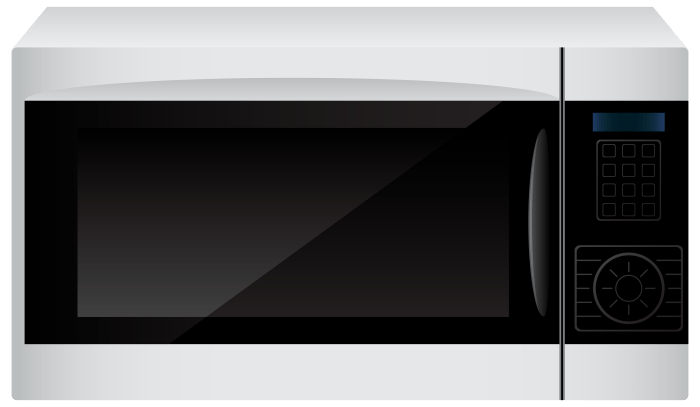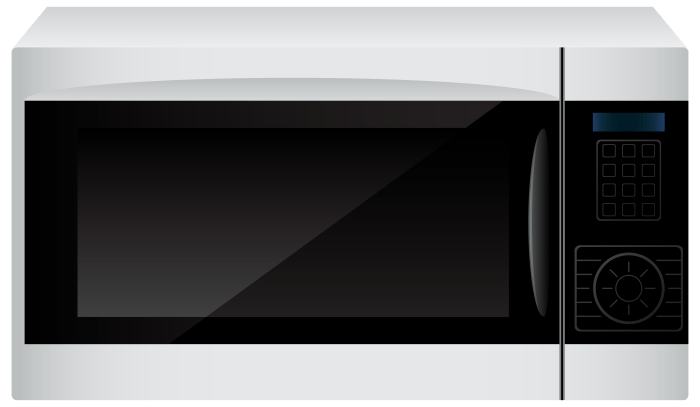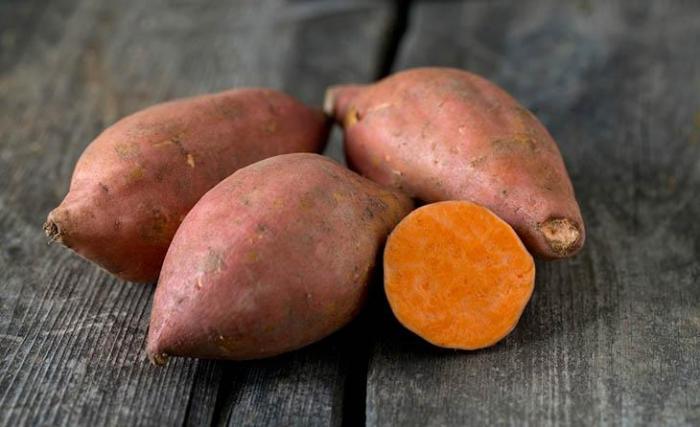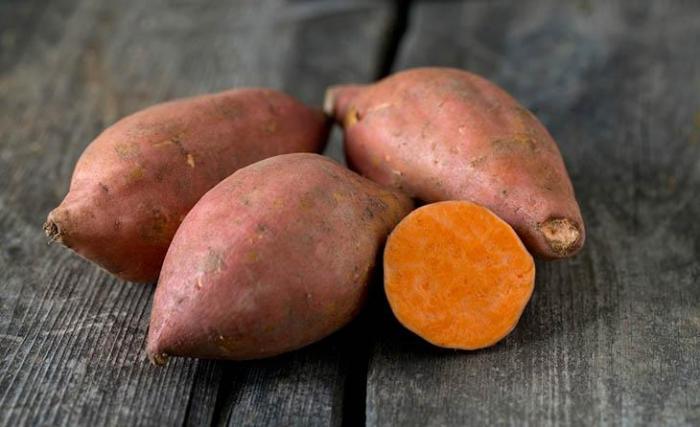Cook Asparagus in the Microwave sets the stage for a speedy and delicious side dish. This method is a fantastic alternative to traditional cooking methods, preserving nutrients and maximizing flavor in minutes. We’ll explore different techniques, from steaming to blanching, and provide tips for selecting perfect asparagus spears. Plus, you’ll discover how to adjust cooking times for various microwave wattages and sizes, ensuring your asparagus is always perfectly cooked.
This post will guide you through the entire process, from choosing your asparagus to serving suggestions. We’ll cover essential techniques, helpful tips for troubleshooting common issues, and insights into the nutritional benefits of this healthy vegetable.
Introduction to Microwave Asparagus Cooking
Microwave cooking offers a quick and convenient way to prepare asparagus, preserving its vibrant color and delicate flavor. This method is particularly appealing for those seeking a healthy and time-efficient meal. The minimal cooking time helps retain nutrients better than other methods like boiling or sautéing. It’s also an excellent choice for busy individuals or those looking to maximize their kitchen efficiency.Compared to other cooking methods, microwave cooking of asparagus offers a significant advantage in terms of speed and nutrient retention.
The rapid heating process minimizes the exposure of the asparagus to high temperatures, thereby reducing the loss of essential vitamins and minerals. This is in contrast to methods like boiling, where nutrients can leach out into the water. Additionally, microwave cooking requires minimal water or oil, making it a healthier option.
Selecting Fresh Asparagus
Fresh asparagus is crucial for achieving optimal flavor and texture in microwave cooking. Look for vibrant green spears that are firm and crisp, with tight, closed ends. Avoid asparagus with yellowing or wilting tips, as these indicate a loss of freshness. Check the stems for any signs of discoloration or soft spots. Spears with a bright, uniform color and a firm texture are the best choice for microwave cooking.
Cooking Time Considerations
Different thicknesses of asparagus spears require varying cooking times to achieve the desired tenderness. This table provides a general guideline for microwave cooking times.
Quick and easy microwave asparagus is a game-changer. Just toss some asparagus with a bit of olive oil and salt, and zap it in the microwave for a few minutes until tender-crisp. Speaking of quick fixes, have you ever needed to bend a pipe without the right tools? Check out this clever tutorial on Bend Pipe Without a Pipe Bender for some surprising hacks.
It’s surprisingly simple, just like cooking asparagus in the microwave! Perfect for a quick weeknight meal.
| Asparagus Thickness (inches) | Approximate Cooking Time (minutes) |
|---|---|
| 1 | 1-2 |
| 1.5 | 2-3 |
| 2 | 3-4 |
| 2.5 | 4-5 |
The table above offers a starting point for cooking asparagus in the microwave. Adjust cooking times based on your microwave’s wattage and the desired level of doneness. Overcooking can lead to mushy asparagus, while undercooking can leave it tough. For optimal results, it is recommended to start with the shorter times and add increments as needed.
Microwave Asparagus Cooking Methods
Microwaving asparagus is a quick and convenient way to enjoy this nutritious vegetable. Different methods offer varying degrees of tenderness and texture, allowing you to tailor the cooking experience to your preference. Knowing how to adjust cooking times for different microwave wattages is crucial for achieving perfectly cooked asparagus.Various microwave cooking methods for asparagus, such as steaming and blanching, provide flexibility in achieving desired results.
Understanding the intricacies of each method, including pre-preparation steps, cooking times, and post-cooking seasoning, will help you master this simple yet versatile technique. By considering these factors, you can ensure your microwave asparagus is always delicious and perfectly cooked.
Steaming Asparagus
Steaming asparagus in the microwave gently cooks the vegetable, preserving its vibrant green color and delicate flavor. This method is particularly suitable for those who prefer a less intense, more tender preparation. A microwave-safe steamer basket is necessary for this method.
- Pre-preparation: Trim the ends of the asparagus spears and arrange them in a microwave-safe steamer basket. Add a small amount of water to the bottom of the microwave-safe dish to create steam. This is crucial for achieving a tender, evenly cooked product.
- Cooking: Place the basket in the microwave and cook on high for 2-4 minutes, depending on the wattage of your microwave and the thickness of the asparagus. Check the asparagus after 2 minutes. Adjust the cooking time as needed to achieve desired tenderness. For example, if using a 1000-watt microwave, 2 minutes may be sufficient for thinner spears, while 4 minutes might be required for thicker spears.
Lower wattage microwaves will need slightly longer cooking times.
- Finishing: Remove the basket from the microwave and immediately toss the asparagus with your desired seasonings. Salt, pepper, butter, lemon juice, or a sprinkle of garlic powder are all excellent choices.
Blanching Asparagus
Blanching is a technique used to quickly cook asparagus, resulting in a slightly firmer texture compared to steaming. It’s ideal for recipes where the asparagus will be further processed, like adding to salads or stir-fries.
- Pre-preparation: Trim the ends of the asparagus spears. Arrange them in a microwave-safe dish. If your dish is not deep enough, you might consider using a microwave-safe container that is suitable for the volume of asparagus you have.
- Cooking: Add a splash of water to the dish, enough to create a small pool around the asparagus. Cover the dish with a microwave-safe lid. Microwave on high for 1-3 minutes, depending on the wattage of your microwave. Adjust cooking time based on the thickness of the asparagus. Thicker spears will need longer cooking times.
For example, if your microwave is 1200 watts, 1 minute might be suitable for thin spears, and 3 minutes for thicker ones.
- Finishing: Immediately transfer the asparagus to a bowl filled with ice water to stop the cooking process. This helps maintain a vibrant green color and firm texture. Season with your preferred herbs and spices, such as garlic powder, salt, or pepper. Drain the asparagus before using it in your dish.
Cooking Time Adjustment Table
| Method | Prepping | Cooking (Time in minutes) | Finishing |
|---|---|---|---|
| Steaming | Trim ends, arrange in basket, add water | 2-4 minutes (adjust based on wattage and thickness) | Toss with seasonings |
| Blanching | Trim ends, arrange in dish, add water | 1-3 minutes (adjust based on wattage and thickness) | Immediately transfer to ice water, season |
Factors Affecting Microwave Cooking
Microwaving asparagus, like any microwave cooking, is affected by a number of variables. Understanding these factors allows for more precise and predictable results, ensuring perfectly cooked asparagus every time. These variables range from the asparagus itself to the microwave’s capabilities.Cooking time and final texture depend on factors beyond simply pressing a button. From the size and shape of the asparagus to the power of your microwave, a deeper understanding of these elements will elevate your microwave asparagus game.
The moisture content plays a critical role in how quickly and evenly the asparagus cooks.
Asparagus Size and Shape
The size and shape of the asparagus spears significantly impact cooking time. Larger spears will take longer to cook thoroughly than smaller ones, as the heat needs to penetrate to the core. Similarly, a dense, thick spear will take longer to cook compared to a thinner one. Unevenly sized spears in a single batch can result in some spears being undercooked while others are overcooked.
Properly prepping asparagus by ensuring spears are roughly the same size enhances the uniformity of cooking.
Microwave Wattage
The wattage of your microwave oven directly influences the cooking time. Higher wattage microwaves deliver more power, leading to faster cooking times. Conversely, lower wattage microwaves will require longer cooking periods. For example, a 1000-watt microwave might cook asparagus in 2 minutes, while a 700-watt microwave could take 3 minutes. Understanding your microwave’s power is key to adjusting cooking times.
Moisture Content
The moisture content of the asparagus affects both the cooking time and the final texture. Asparagus with higher moisture content will cook more quickly, as the moisture helps distribute heat. However, too much moisture can lead to mushy asparagus. If the asparagus is dry, the cooking time may need to be adjusted to prevent burning. Pre-treating asparagus to remove excess moisture can sometimes help with achieving desired results.
Adjusting Cooking Times for Different Microwave Models
A crucial aspect of microwave cooking is the need to adapt cooking times to the specific model of your microwave. The cooking time is not a universal constant; it is directly related to the wattage and other internal workings of the microwave oven. Manufacturers provide wattage specifications, and the specific model of your microwave should also have a guide for general cooking times.
Wattage and Cooking Time Table
| Microwave Wattage (Watts) | Approximate Cooking Time (minutes) |
|---|---|
| 700 | 2-3 |
| 800 | 2-2.5 |
| 900 | 1.5-2 |
| 1000 | 1-2 |
This table provides a general guideline; precise cooking times will vary based on the specific asparagus and any additional factors like added ingredients or coverings. Always start with the shorter time and monitor closely for doneness.
Variations and Enhancements

Spice up your microwave asparagus! Beyond the basic steaming method, a world of flavor awaits. From savory sauces to vibrant additions, you can transform your simple microwave asparagus into a delicious side dish or a complete meal component. Experiment with different combinations to find your perfect asparagus recipe.
Quick and easy microwave asparagus is a game-changer! It’s surprisingly delicious, and perfect for a weeknight meal. Learning how to efficiently cook asparagus in the microwave can be a lifesaver, especially when you’re busy. If you’re interested in the intricate workings of the Imperial government during the events of Rogue One, you might enjoy a deep dive into imperial government guide imperials rogue one.
Ultimately, mastering the microwave method for asparagus will save you valuable time and effort, making meal prep that much easier.
Seasoning and Flavor Profiles
Asparagus, with its delicate flavor, readily absorbs seasonings. Garlic powder, onion powder, paprika, and even a pinch of red pepper flakes can elevate the taste. Consider using different herbs like thyme, rosemary, or oregano to add depth and complexity. For a more intense flavor, try a blend of spices or a dedicated seasoning mix tailored for vegetables.
Experiment with different levels of intensity, starting with a small amount of seasoning and adjusting to your preference.
Sauces and Marinades
Adding sauces and marinades enhances the taste and texture of microwave-cooked asparagus. A simple lemon-herb vinaigrette, a creamy garlic sauce, or a balsamic glaze can transform the dish. Marinades can also be used before microwaving to add a layer of flavor. A simple mixture of olive oil, lemon juice, and herbs, or a more complex marinade with soy sauce, ginger, and garlic, can be used for a flavorful start.
Adding Other Vegetables
Expanding your dish beyond asparagus is easy. Broccoli florets, bell pepper strips, or cherry tomatoes can be added to the same microwave container for a vibrant and flavorful medley. Consider the cooking times for each vegetable to ensure even cooking. For example, broccoli might need a slightly longer cooking time than asparagus. Mixing vegetables with different textures and flavors can create a well-rounded dish.
Combining with Other Ingredients
Microwave-cooked asparagus can be a delightful complement to various ingredients. Toss it with scrambled eggs for a quick and nutritious breakfast or brunch dish. Add it to a stir-fry with your favorite proteins like chicken or tofu. Grilled or pan-fried fish also pairs beautifully with the tender asparagus. The possibilities for combining asparagus with other ingredients are limitless, opening the door to numerous culinary creations.
Suitable Sauces and Marinades for Asparagus
| Sauce/Marinade | Ingredients | Description |
|---|---|---|
| Lemon-Herb Vinaigrette | Olive oil, lemon juice, herbs (dill, parsley, thyme) | A bright and refreshing sauce. |
| Garlic Sauce | Olive oil, minced garlic, butter, Parmesan cheese (optional) | A savory and creamy sauce. |
| Balsamic Glaze | Balsamic vinegar, honey (optional) | A sweet and tangy glaze. |
| Soy-Ginger Marinade | Soy sauce, rice vinegar, ginger, garlic | A savory marinade with Asian flavors. |
| Honey Mustard | Honey, Dijon mustard, apple cider vinegar | A sweet and tangy marinade. |
Serving Suggestions
Microwave-cooked asparagus, with its vibrant green color and tender texture, is a delightful side dish that elevates any meal. Beyond its simple preparation, there’s a world of possibilities when it comes to serving this versatile vegetable. From elegant presentations to creative meal combinations, this section will explore various serving suggestions to maximize the enjoyment of your microwave-cooked asparagus.Transforming a simple side dish into a culinary masterpiece is as easy as understanding the presentation and pairings.
This section will offer practical tips and ideas for making your microwave asparagus stand out.
Serving Asparagus as a Side Dish, Cook Asparagus in the Microwave
A well-chosen side dish can enhance the flavors of your main course and complement the textures of the meal. Microwave asparagus, with its tender-crisp texture and mild flavor, pairs beautifully with a wide range of dishes. It’s crucial to consider the flavors of the main course when selecting a side dish, ensuring a harmonious balance of tastes and textures.
- Classic Pairing: Roast chicken, pan-seared salmon, or grilled steak. The simple yet elegant flavor profile of microwave asparagus enhances the taste of these protein-rich dishes, providing a refreshing contrast to the richness of the main course.
- Vegetarian Options: Microwave asparagus pairs well with vegetable stir-fries, lentil soups, or quinoa bowls, providing a healthy and flavorful accompaniment to plant-based meals.
- Asian-Inspired Dishes: The mild flavor of microwave asparagus is excellent with ginger-soy sauces or sesame-based dressings, adding a touch of Asian flair to the dish.
Visual Appeal in Serving
The presentation of your dish significantly impacts the overall dining experience. A visually appealing presentation can enhance the enjoyment of the food, creating a more memorable and satisfying meal. The following tips will help you present your microwave asparagus in a way that’s both attractive and delicious.
- Arrangement: Arrange the asparagus spears in a visually appealing pattern, such as a spiral or a fan shape, on a platter. This adds a touch of elegance to the dish.
- Garnish: A sprinkle of fresh herbs like parsley or chives, a drizzle of olive oil, or a sprinkle of sesame seeds can add visual interest and enhance the flavor profile of the asparagus.
- Plating: Consider using colorful plates or platters to contrast with the green color of the asparagus. A touch of color can add visual appeal and create a more engaging presentation.
Incorporating Microwave Asparagus into Meal Plans
Microwave asparagus is incredibly versatile and can easily be incorporated into various meal plans. Its quick preparation time makes it an ideal choice for busy weeknights, while its healthy properties make it a valuable addition to a balanced diet.
- Breakfast: A simple side of microwave asparagus with eggs and whole-wheat toast provides a healthy and nutritious breakfast option.
- Lunch: Combine microwave asparagus with grilled chicken or fish salads for a quick and satisfying lunch.
- Dinner: Microwave asparagus can be incorporated into a wide range of dinner meals, from pasta dishes to vegetable stir-fries.
Side Dishes Complementing Microwave Asparagus
The key to a successful meal is choosing side dishes that complement the main course. When serving microwave asparagus, consider selecting sides that enhance the flavor profile and provide a balanced meal.
- Roasted Vegetables: Roasted vegetables like broccoli, carrots, or bell peppers offer a complementary flavor and texture contrast to the tender asparagus.
- Quinoa or Brown Rice: These whole grains provide a hearty and nutritious side dish that complements the flavor of the asparagus.
- Simple Salads: A light and refreshing salad with mixed greens, cherry tomatoes, and a light vinaigrette can provide a palate cleanser between the main course and the dessert.
Serving Presentation Table
The following table showcases various serving presentations for microwave asparagus, offering inspiration for creating visually appealing and flavorful dishes.
| Presentation | Description | Pairing Suggestion |
|---|---|---|
| Classic Asparagus | Simple arrangement of asparagus spears on a platter. | Grilled chicken, roasted potatoes |
| Asparagus with Lemon Vinaigrette | Asparagus tossed with a lemon vinaigrette. | Pan-seared salmon, quinoa |
| Asparagus with Herbs | Asparagus garnished with fresh herbs. | Vegetarian stir-fry, lentil soup |
| Asparagus in a Quinoa Bowl | Asparagus incorporated into a quinoa bowl. | Various protein sources, tofu, tempeh |
Troubleshooting and Tips
Microwaving asparagus can be a breeze, but sometimes things don’t go exactly as planned. Knowing how to troubleshoot common issues will help you achieve perfectly cooked asparagus every time. This section will cover potential problems and their solutions, ensuring you get the best possible results from your microwave cooking adventures.
Common Microwave Asparagus Cooking Issues
Troubleshooting microwave cooking often involves understanding the interplay of factors such as wattage, the type of asparagus, and the amount of time used. Overcooked asparagus loses its vibrant color and satisfying crunch, while undercooked asparagus lacks the desired tenderness. Recognizing these potential problems is the first step toward success.
Overcooked Asparagus
Overcooked asparagus can become mushy and lose its appealing texture. Several factors can contribute to this issue. High microwave wattage, prolonged cooking times, and insufficient liquid in the dish can lead to excessive heat penetration, resulting in mushy asparagus. Use shorter cooking intervals, and adjust the wattage if needed.
Quick and easy microwave asparagus is a game-changer, perfect for a weeknight meal. But sometimes, even the simplest recipes can inspire deeper connections, like figuring out how to turn a friendly acquaintance into a romantic partner. Check out this helpful guide on Turn a Friend Into a Lover for some insightful strategies. Either way, this simple method for cooking asparagus in the microwave makes a healthy and satisfying side dish in no time.
Undercooked Asparagus
Undercooked asparagus retains a slightly tough texture. This can stem from insufficient cooking time, low microwave wattage, or uneven distribution of heat. Increase the cooking time or use a higher wattage setting. Stirring during the cooking process helps ensure even heating.
Preventing Mushy Asparagus
Achieving the perfect texture is key to enjoying microwave asparagus. Preventing mushiness requires careful attention to cooking time and wattage. A crucial element is using a microwave-safe dish. A non-stick surface can help prevent sticking, while a ceramic dish may distribute heat more evenly.
Tips for Achieving the Perfect Texture
For optimal tenderness and texture, start with fresh, high-quality asparagus. Properly blanched asparagus can also result in better texture, though blanching is not essential for microwave cooking. Using appropriate cooking times and adjusting for different microwave wattages are critical for avoiding overcooking. Consider using a microwave-safe, lidded dish to help retain moisture and prevent overcooking.
Table of Potential Problems and Solutions
| Potential Problem | Possible Solution |
|---|---|
| Overcooked asparagus (mushy texture) | Reduce cooking time, lower microwave wattage, or use a lower wattage setting. |
| Undercooked asparagus (tough texture) | Increase cooking time, use higher microwave wattage, or stir the asparagus during cooking. |
| Unevenly cooked asparagus | Stir the asparagus halfway through the cooking process to ensure even heat distribution. |
| Asparagus becoming mushy | Use shorter cooking intervals, add a small amount of water to the dish, or use a microwave-safe lid to retain moisture. |
Nutrition and Health Benefits: Cook Asparagus In The Microwave
Asparagus, a springtime delicacy, offers more than just a delicious taste. This vibrant green vegetable boasts a wealth of nutrients and potential health benefits. Microwave cooking, when done correctly, can help preserve many of these nutrients, making it a healthy and convenient option. Understanding the nutritional profile and how cooking methods affect it allows you to maximize the health advantages of this versatile vegetable.Microwave cooking of asparagus, when done correctly, can maintain a significant portion of its nutritional content compared to other cooking methods.
The rapid heating process minimizes nutrient loss through leaching and oxidation, preserving vitamins and minerals. However, excessive cooking can still lead to some degradation. This makes it a valuable addition to a balanced diet.
Nutritional Value of Asparagus
Asparagus is a low-calorie, nutrient-dense vegetable packed with essential vitamins and minerals. Its unique composition makes it a valuable part of a healthy diet.
- Asparagus is a good source of dietary fiber, promoting healthy digestion and aiding in feelings of fullness.
- It’s rich in various vitamins, including vitamin K, which is crucial for blood clotting and bone health, and vitamin C, known for its antioxidant properties and immune support.
- Asparagus contains several important minerals, including potassium, which helps regulate blood pressure, and folate, essential for cell growth and development.
Key Vitamins and Minerals
Understanding the key vitamins and minerals present in asparagus helps appreciate its nutritional value.
- Vitamin K: Essential for blood clotting and bone health. A deficiency can lead to increased bleeding risk and weakened bones.
- Vitamin C: A powerful antioxidant that protects cells from damage and supports the immune system. It also aids in iron absorption.
- Folate: Crucial for cell growth and development, particularly important for pregnant women and those of childbearing age. Folate deficiency can lead to neural tube defects in developing fetuses.
- Potassium: Plays a vital role in maintaining healthy blood pressure levels. Adequate potassium intake can help reduce the risk of stroke and heart disease.
- Fiber: Contributes to digestive health and promotes feelings of fullness, aiding in weight management.
Nutritional Information per Serving
The nutritional value of asparagus varies depending on factors like size and preparation method. A typical serving (about 1 cup, chopped) provides a significant contribution to a balanced diet.
| Nutrient | Amount (per 1 cup serving) |
|---|---|
| Calories | 20-30 |
| Protein | 2-3 grams |
| Fiber | 2-3 grams |
| Vitamin K | 10-20% of the daily recommended value |
| Vitamin C | 5-10% of the daily recommended value |
| Folate | 5-10% of the daily recommended value |
| Potassium | 100-200mg |
Note: Values may vary based on preparation methods and specific asparagus varieties. Consult with a nutritionist or registered dietitian for personalized dietary advice.
Conclusion

Cooking asparagus in the microwave is a surprisingly versatile and efficient method. With the right techniques and a bit of adjustment for your microwave’s wattage, you can achieve perfectly cooked asparagus in a fraction of the time. From quick weeknight meals to elegant dinner parties, this guide provides the tools to incorporate delicious and nutritious microwave asparagus into your daily life.
Experiment with seasonings, sauces, and side dishes to discover your favorite way to enjoy this springtime delight.




